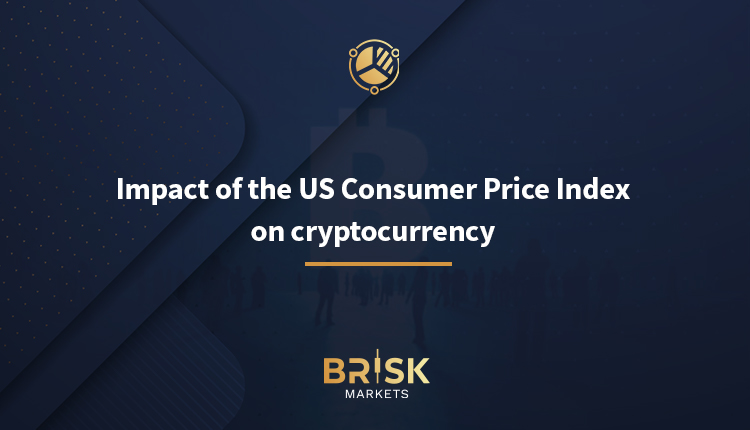Crypto investors have been keeping a close eye on the US CPI during the recent bear market. The Fed rapidly increased interest rates in the last session, devastating risk markets. The collapse in cryptocurrency lending has sharpened the bear market. However, inflation is falling again and showing positive signs over the past six months. It is important that this trend continues.
US inflation data
Fed and Powell members have made it clear in recent weeks that they expect inflation to continue to fall. That’s good news, but unexpectedly high data could destroy optimism. While everyone hopes to ease hiring to allow further rate cuts, a return to inflation could roul cryptocurrencies despite the excitement of halving..
That is why today’s data were crucial. No cut was expected for March, but the fate of the cut in May and the annual total will depend on future inflation data. Today’s forecast for January was that the expected decline in core inflation did not occur. Although the data beat expectations, the monthly increase suggests that interest rate cuts will be slow going forward. Fed officials were optimistic that inflation would return to their annual target of 2%.
The negative impact of this is likely to be felt most in the risk markets in the coming hours. The dollar index rose from 104 to 104.580 immediately after the data was released. The US stock market turned to pre-market sales. The Fed’s swaps give less likelihood of a rate cut in May and June. Investors postponed the Bank of England’s first interest rate cut by 25 basis points from August to September.
The US consumer price index exceeds expectations and its impact on monetary policy
The US consumer price index fell to 3.1%, however, it significantly exceeded economists’ expectations. Hotter-than-expected inflation rates point to the heating of the economy, which could prompt the Fed to reconsider its monetary policy stance in the coming months. Amid this economic enthusiasm, Bitcoin is losing momentum after recently surpassing the $50,000 mark.
The US consumer price index is hotter than expected as the US Bureau of Labor Statistics announced on Tuesday that the annual inflation rate in the US as indicated by the consumer price index fell to 3.1% in January from 3.4% in December. However, this figure exceeded market expectations, which had expected a decline to 2.9%. In addition, the core consumer price index, which omits volatile costs of food and energy, rose by 3.9% over the same time frame, which is equivalent to The increase seen in December and exceeds analysts’ expectations of 3.7%.
January saw a higher-than-expected rise in inflation, largely due to continued high shelter costs affecting consumers, according to a report released by the Labor Department on Tuesday. The Bureau of Labor Statistics noted that the consumer price index, which measures a wide range of prices for goods and services paid by consumers across the economy, rose 0.3% during the month.
Excluding more volatile food and energy prices, the core CPI rose 0.4% in January, an increase from the previous year. This acceleration exceeded the projected rates for this month.
These data are released at a critical time for the Federal Reserve as it aims to find the right balance of monetary policy in 2024. Although financial markets are pushing for deep interest rate cuts, Fed officials have adopted a more cautious tone in their statements, suggesting the importance of being guided by actual economic data rather than pre-expectation.
Bitcoin Declines on US Consumer Price Index
The leading cryptocurrency saw a rapid decline from the $50,000 threshold to $48,547 with the release of the US Consumer Price Index. Despite the decline in prices after the last-minute joint data, Bitcoin continues to remain at the $48,00 level. Long overhead wicks in 15-minute candles indicate that profit-taking operations may continue to push the negative for a while.
Cryptocurrencies are seen as riskier assets, and in times of economic uncertainty or inflation concerns, investors may shift their portfolios towards safer assets, such as bonds or gold.
Inflation data showed a decline compared to December’s figures, but came in again above expectations. The primary motivation for investors in risk markets is related to the continuation of this decline at a similar pace. However, data supporting ongoing concerns about inflation suggests that low inflation may stalls in the coming months, which could force the Fed to postpone interest rate cuts.
But the current view suggests that the decline may continue. This week we will see statements from Fed members. Tomorrow Golsbee of the Federal Reserve will speak, followed by Barr and Bostik.
The approach of Fed members towards inflation over the next 24 hours will be crucial to the market’s performance this week. The rise of altcoins has slowed with Bitcoin sales, and daily gains exceeding 5% are approaching neutral territory.
If deflation continues, adult targets will remain in place. However, in a scenario where investors focused on inflation data begin to dominate, we could see a new rally supported by ETF entries. Investors should be prepared for liquidity hunting movements in futures trading by setting their stops well.





